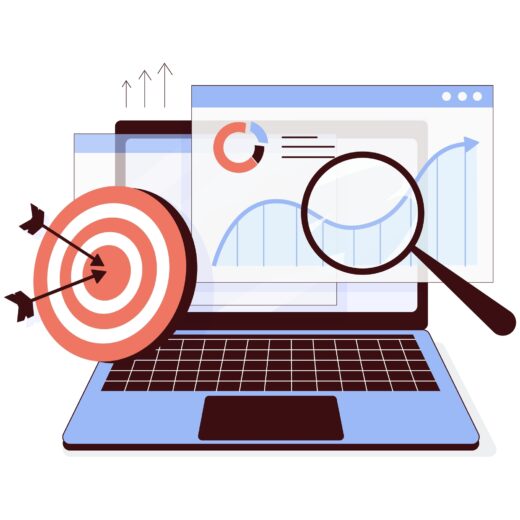SEO vs. SEM: Which Strategy Should You Prioritise

In the world of digital marketing, two key strategies stand out when it comes to improving online visibility and driving traffic to your website: SEO and SEM. While both aim to enhance a website’s performance in search engine results pages, they operate differently and offer distinct benefits. In this blog post, we’ll delve into the nuances of SEO and SEM, comparing their strengths and discussing which strategy you should prioritise for your business.
Understanding SEO
Search Engine Optimisation (SEO) involves optimising your website to improve its visibility and ranking in organic (non-paid) search engine results. This process entails various techniques aimed at enhancing your site’s relevance and authority in the eyes of search engines like Google, Bing, and Yahoo.
Key Components of SEO:
- Keyword Research and Optimisation: Identifying relevant keywords and strategically incorporating them into your website’s content, meta tags, and headings to attract targeted traffic.
- On-Page Optimisation: Optimising individual web pages by optimising meta tags, headings, content, and internal linking structure to improve search engine visibility.
- Off-Page Optimisation: Building quality backlinks from reputable websites to enhance your site’s authority and credibility in the eyes of search engines.
- Technical SEO: Addressing technical aspects of your website, such as site speed, mobile-friendliness, crawlability, and indexability, to ensure optimal performance in search results.
Benefits of SEO:
- Long-term Sustainability: Unlike paid advertising, SEO efforts can yield long-lasting results, driving consistent organic traffic to your site over time.
- Cost-effectiveness: While SEO requires an initial investment of time and resources, the ongoing costs are relatively low compared to SEM campaigns, making it a cost-effective strategy in the long run.
- Credibility and Trust: Websites that rank highly in organic search results are perceived as more credible and trustworthy by users, leading to higher click-through rates and conversions.
Understanding SEM
Search Engine Marketing (SEM), on the other hand, involves promoting your website through paid advertising on search engines. The most common form of SEM is pay-per-click (PPC) advertising, where advertisers bid on keywords and pay for their ads to appear at the top of search results pages.
Key Components of SEM:
- Keyword Research and Targeting: Identifying relevant keywords with high commercial intent and bidding on them to display your ads to users actively searching for products or services.
- Ad Copy and Creative: Crafting compelling ad copy and creative elements that entice users to click on your ads and visit your website.
- Bid Management and Budgeting: Monitoring and adjusting your keyword bids and budget allocation to maximise the performance and ROI of your SEM campaigns.
- Ad Extensions and Features: Utilising ad extensions and features like sitelinks, callouts, and structured snippets to enhance the visibility and effectiveness of your ads.
Benefits of SEM:
- Immediate Results: SEM campaigns can generate instant visibility and traffic to your website, making them an ideal choice for promoting time-sensitive offers or events.
- Targeted Reach: SEM allows you to target specific demographics, locations, and user behaviors, ensuring your ads are seen by the most relevant audience.
- Measurable ROI: With SEM, you can track and measure the performance of your campaigns in real-time, allowing you to optimise your strategy and maximise your return on investment (ROI).
Which Strategy Should You Prioritise?
Ultimately, the decision to prioritise SEO or SEM depends on your business goals, budget, and timeline. While SEO offers long-term sustainability and cost-effectiveness, SEM can deliver immediate results and targeted reach. For maximum impact, consider incorporating both strategies into your digital marketing arsenal, leveraging the strengths of each to achieve your objectives effectively. By striking the right balance between SEO and SEM, you can enhance your online visibility, drive quality traffic to your website, and ultimately, achieve your business objectives.








